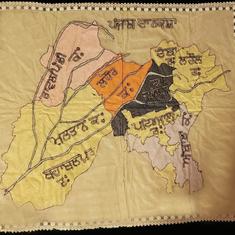Each trip took careful planning, according to Moon. Some trees’ foliage looked best during the rainy seasons while others in the winter. Places like the Yemeni island of Socotra had strong monsoon winds for months, giving her just a narrow window of time to shoot the dragon blood tree. And that’s not to mention the work involved in figuring out the right hour and ideal light conditions to do a tree’s portrait justice.
Choosing trees for their unique size, age, folklore, or simply their mysterious beauty, Moon captured and compiled images of trees from across Asia, North America, Africa, and Europe into a book, Ancient Trees, Portrait of Time. She also tried to capture the natural and cultural history of the ancient trees, which can range from a few hundred to afew thousand years old. (Curiously, “ancient” doesn’t just describe a tree that’s extremely old for its species but, according to UK conservation charity, National Trust, signifies a category of historically important trees that “have amazing character and beauty and [are] incredibly rich in wildlife.”)
Take a look at some of the awe-inspiring trees Moon features.

Yews of Wakehurst taken in Ardingly, West Sussex, England in 1999: Its tentacle-like roots ride over the cliff’s edge to find soil to sink into and its drooping branches filter out daylight, according to Moon, giving the woods an eerie ambience.(Beth Moon/Abbeville Press)

Rilke’s Bayon taken in Ta Prohm, Siem Reap Province, Cambodia in 2007: Of the species Tetrameles nudiflora, it can reach a height of 150 ft (46 m) and is found in the Indo-Malayan region, according to the US Department of Agriculture.(Beth Moon/Abbeville Press)

The Bowthrope Oak taken in Bourne, Lincolnshire, England in 2002: With a circumference of 40 feet (12 m), it’s one of the largest-girthed living oaks in Britain and one of the oldest living oak trees at about 1,200 years.(Beth Moon/Abbeville Press)

Avenue of the Baobabs taken in Morondava, Madagascar in 2006: Only found in Madagascar, these trees rise to nearly 100 ft (30 m) and are about 800 years old. They’re also a great source of food, fiber, dye, rope, and fuel and appropriately known as renala, meaning “mother of the forest” in Malagasy.(Beth Moon/Abbeville Press)

The Sentinels of St. Edwards taken in Stow-on-the-Wold, Gloucestershire, England in 2005: Two yews frame the door of a church, which is said to be the inspiration for J.R.R. Tolkein’s Doors of Moria in The Lord of the Rings.(Beth Moon/Abbeville Press)

The Baobabs of Kubu Island 3 taken in Makgadikgadi Pans, Botswana in 2013: Able to grow with very little water, they give the surrounding space an eerie and surreal feel, according to Moon who describes the baobabs as more like creatures than trees.(Beth Moon/Abbeville Press)
This article originally appeared on Qz.com.










